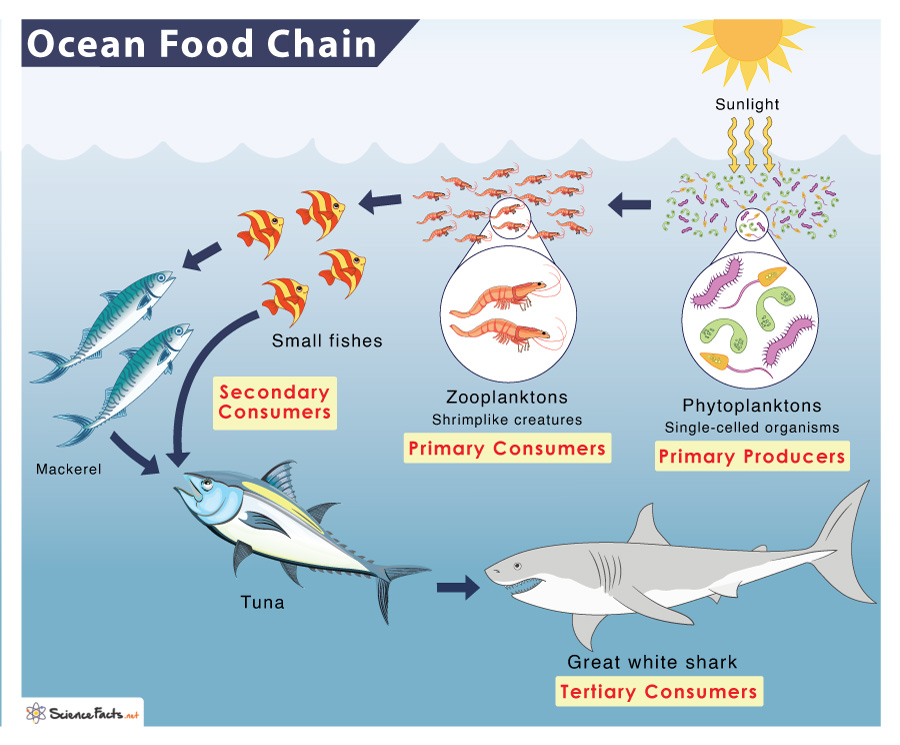The marine biome is the largest worldwide, covering three-quarters of the Earth’s surface. About 15% of all the species living on Earth, containing almost 300,000 species, are marine dwellers. The marine ecosystem consists of a series of interconnected producers and consumers.
Example
Level 1: Primary Producers (Photoautotrophs)
Level 2: Primary Consumers (Herbivores)
Level 3: Secondary Consumers (Carnivores)
Level 4: Tertiary Consumers (Top Predators)
Alternative Ocean Food Chains
Like terrestrial food chains, the primary ocean food chain also has different levels. Together these compounds play a significant role in producing food that sustains the entire ocean’s food chain. They also contribute more than half of the oxygen we breathe. Although small, herbivores are significant eaters in the food chain, only to be eaten by the succeeding food chain elements, the carnivores. Although they successfully catch prey, they also fall prey to the animals in the next level of the food chain – the tertiary consumers also called the predators. Thus, protecting these groups of animals is extremely important as their numbers are often slow to rebound and can affect the balance of the entire food chain. Although predators reside at the topmost level of the ocean food chain, they are not safe from the ultimate predators – humans. Food chains also vary from one oceanic environment to another. The weather and climate differ from one geographic location to another. Accordingly, there are five leading ocean food chains in the marine biome:
